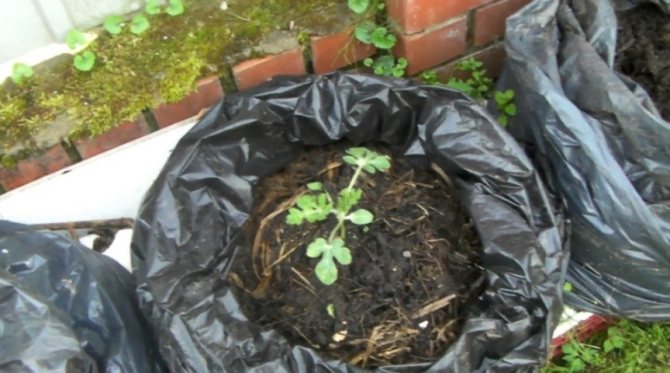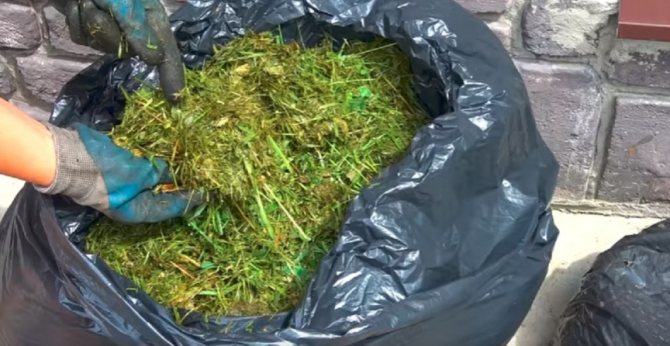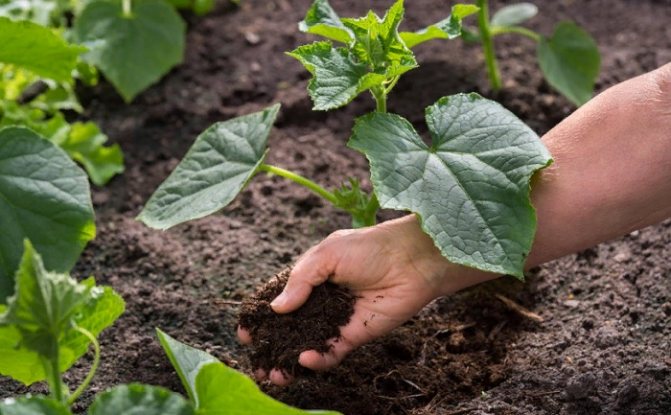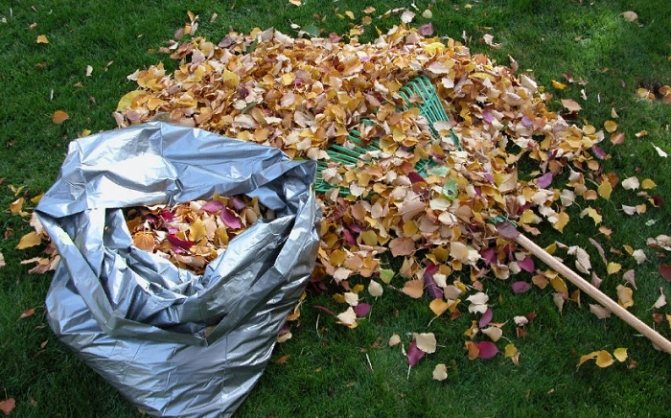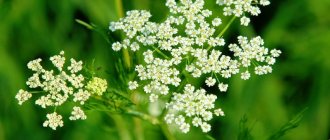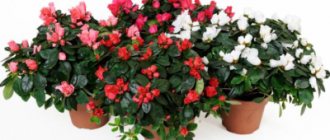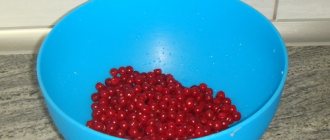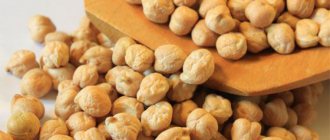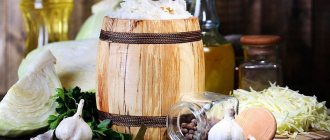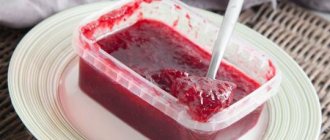
Each garden plot has many different trees and shrubs. And each of them sheds its leaves in the fall. In addition, after harvesting, whole heaps of plant waste remain. What to do with all this wealth? Some gardeners just send them with the trash, some burn them. Both decisions are wrong. All of these components can be used for composting. However, many find reasons not to start a lawsuit with its preparation. One of the reasons is the lack of space for the construction of a pit or a piece of land for a heap. But it turns out that humus can be prepared in bags.
Before considering how to make leafy humus in bags, you should understand the general concepts.
Compost is an artificial fertilizer made from tree leaves and plant waste.
What is the use of leaf humus?
Fallen leaves are used as fertilizer only after appropriate preparation, since in its original form the material does not contain nutritional value and essential trace elements. It is not recommended to leave untreated foliage on the ground: harmful insects, rodents, fungal and bacterial diseases can develop in it.
To use the leaves with benefit, you can prepare humus, which is suitable for fertilizing the soil. The advantages of such feeding:
- Maintain the optimal amount of moisture to keep the plant hydrated without interruption, even in dry conditions.
- The appearance of a large number of earthworms, providing the soil with the exchange of water and air, the friability and softness of the structure.
- Acidification of the soil cover, which has a positive effect on the yield of plums, apples, pears, as well as flowering and budding of many decorative indoor flowers.
- The leaves are used as mulch for vegetable gardens. The result is especially noticeable on vegetable and horticultural crops.


What leaves can be used on the site?
The best option for fertilizing a garden is deciduous tree litter, especially fruit trees. Coniferous stands can also be used to prepare top dressing, but the needles must be carefully chopped: they rot take longer. Oak leaves should be used with caution as they can acidify the soil. A positive result was shown by the use of litter of rowan, poplar, cherry, chestnut, hawthorn, birch, beech, maple, berry bushes. The leaves of these crops contain a large amount of macro- and microelements, incl. nitrogen and calcium (the concentration of these components depends on the type of trees or shrubs).
The collection of leaves is carried out using a broom, a rake of various shapes, a lawn mower set to the highest height, a special vacuum cleaner. The last two options are good because litter enters the container in a crushed form, therefore it is immediately ready for introduction into the soil.
What to do with leaf humus?
The leaves must be collected, crushed, folded into a prepared container and tamped well. The storage capacity can be:
- self-made wooden or iron boxes 1x1 size (no lid required);
- plastic bags;
- garbage bags.
Using the last two devices, it is necessary to make several holes in them for air to enter.The leaves must be moist. If the amount of moisture is insufficient, the raw material should be poured with water.
Humus readiness for use
The ripening period of the fertilizer depends on the species of trees or bushes, the height and density of the leaf embankment. On average, the process takes from six months to 3 years.
At the initial stage of decay, the mass is heterogeneous: it has inclusions of the base of the leaf, cuttings, large parts. This substrate is used for mulching, preparation of seed material and seedlings, as a component of a compost heap, for lawn grass. You can add the composition as top dressing of the soil before digging in the spring, in flower pots, add to perennial crops. The immature material is used as part of a special soil for indoor flowers.
After 2-3 years, the decayed leaves acquire the structure and consistency of the earth, smell of forest soil, and acquire a dark color. You can use the resulting composition as a fertilizer or as a mulch for flowers that prefer acidic soil.


What else can you do with litter?
In addition to preparing humus, the leaves can be used as follows:
- Make compost (more on this later in the article).
- Transfer in the fall to a plot of the garden that has not been used in the current season. The leaf layer will protect it from the active growth of weed grass, moisture evaporation, and the washing out of humus from the ground. In spring, the leaves can be added to the compost heap.
Fallen leaves compost
Composting is an excellent option for processing fallen leaves. It is an organic fertilizer that is free of charge to feed the vegetable garden. You can add grass cuttings, food waste, manure, bird droppings, small branches, vegetable tops, straw, wood shavings, sawdust to the pile. Litter from trees and shrubs goes well with the listed components.
The leaves should be healthy, not affected by pests, diseases.
Composting can be done in different ways:
- Compost pit. It is necessary to dig a depression in the ground (approximately 0.3 m). In width, the size 1x1 or 2.5x2.5 is suitable, depending on the dimensions of the free area of the site. The benefit of this composting method is the continuous composting process, even in winter. It is necessary to lay the components in layers, soaking them with liquid.Every month, it is necessary to turn the compost layers with a fork or a shovel to saturate the material with air and, accordingly, accelerate maturation.
- Compost heap. It is necessary to prepare a place for storing and ripening compost in a small area of the garden, fencing it with wooden planks. You can make a small gate in the fence for easy access to the compost. The structure is created by laying layers of leaves at the rate of 5 parts of leaf litter per 1 hour of food waste. It is necessary to periodically stir up the compost. The first turning must be done no earlier than 21 days after laying. In dry weather, it is advisable to moisten the heap. It is recommended to cover the structure from above with a film to maintain heat inside.
- Compost in bags. If there is not enough free space for the compost heap, plastic bags can be used as a container for preparing fertilizer. The component placement process is the same for all composting methods. The only difference is in the storage of compost. The leaves of fruit trees and many forest plantations rot faster than the litter of evergreen crops. The readiness period can be up to 3 years. To speed up this process, the raw materials are crushed. There is an apparatus on sale called "mulcher" that will help to cope with the task. In the bag you need to make several holes for the unhindered flow of air.The top of the bag is not tied up as moisture is paramount in the maturation of the finished compost. The compost bag is sold at specialist gardening stores. Growers also use regular garbage bags (large). The main condition is black color and high packing density. It is forbidden to add to compost:
- diseased plants;
- fresh manure;
- toxic agents and residues from them;
- recently cut weeds;
- bones, animal meat.
- Compost in barrels. On sale there are special units designed for composting in a short time. The essence of their work is the constant continuous turning of the working material. Fertilizer readiness is reduced to a week
Nitrogen-containing grass (nettle, lawn) will serve as a decay accelerator. The bagged compost will be ready for use after 1-2 years.
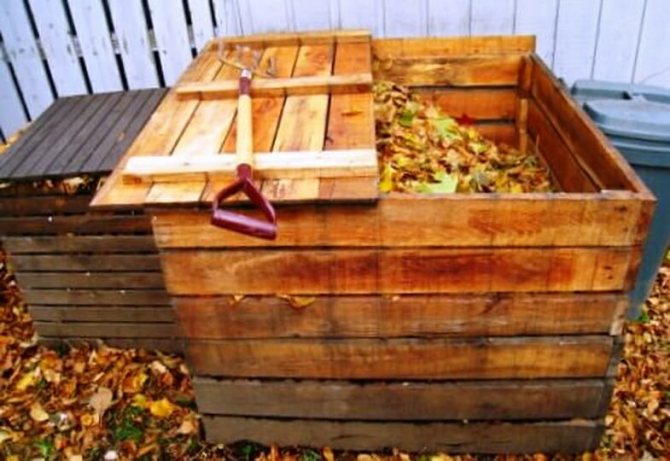

Pros and cons of leaf compost
Compost has several advantages:
- increases soil fertility, improves its structure;
- no need to spend money on waste removal and purchase of additional fertilizing;
- compost is an ecological agent, does not harm humans and the environment;
- improves soil moisture exchange;
- it is used for mulching, does not allow the germination of weed grass;
- acts as a bait for hedgehogs that destroy pests;
- promotes the development of beneficial microflora;
- provides sufficient fertilization of the vegetable garden without the use of chemicals.
The disadvantages of leaf compost include the need for frequent watering of the heap and careful selection of tree species to collect the foliage. Some deciduous litter sticks to each other, which increases the composting time.
Cooking technology
At the bottom of the container for the future compost, you need to lay a sod pillow 5 cm high.Then you need to lay the leaves in layers (each layer is not more than 10 cm), sprinkling them with soil: this is necessary for the beneficial microflora to get into the fertilizer. Leaf interlayers are moistened with a solution of urea or nitrate, caustic soda, slurry from fermented grass, wood ash in turn, not forgetting to sprinkle the leaves with earth.
After the layers are formed, cover the structure with grass (5 cm). Pour on top:
- chopped straw (to provide the soil with oxygen);
- hay for the appearance of beneficial microorganisms.
The prepared compost should be watered with diluted potassium permanganate (1%). The top should be covered with a layer of grass, plantings down. Then you need to insert 2 tubes to the middle for air exchange and moisture passage.


How to prepare bagged weed fertilizer?
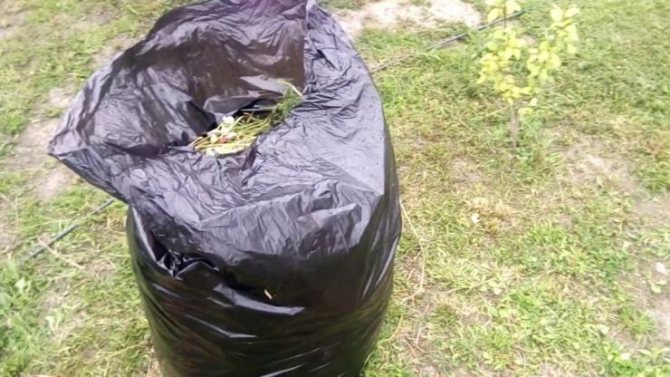

To prepare compost feeding, it is not necessary to build special boxes and compost heaps or buy a ready-made composter. For these purposes, ordinary garbage bags (always black) are suitable.
Collection and preparation of components
Weed grass, which is present in abundance in every summer cottage, can become the basis for fertilizing plants. The main rule that must be observed when collecting material is that the weeds must be young, not blooming and not in the stage of seed formation. Otherwise, the fertilizer will become a source of even greater litter growth.
Some gardeners specially sow the aisles with useful grass, which, after the formation of seedlings, is mowed with a lawn mower and laid in compost.
Shredding
Before putting the material into a bag, it is shredded. An automated garden shredder will help make the process easier.
Composting material
To create drainage, a layer of twigs or sawdust is placed on the bottom of the compost bag. After that, the prepared raw materials are placed, alternating with soil layers and food waste.The layers are well compacted. The dry material is additionally moistened with water.
Additives Required (Composting Accelerators)
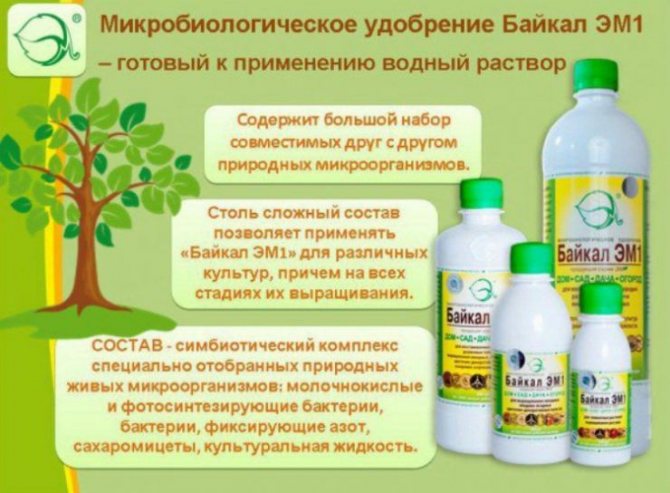

To improve the quality of organic fertilizer and to accelerate its ripening, special liquid-catalysts will allow.
- A mixture of sugar and yeast, diluted with water: for one liter of dry yeast, you need a glass of sugar and 1 liter of water. The solution is poured into the hole in the bag.
- Nettle infusion: dilute 5 parts of the herb in 20 parts of warm water and add chicken dung (2 parts).
- Ready-made biostimulants, EM-preparations like "Baikal". It contains many beneficial microbes and nutrients. Dilute the product in water in accordance with the instructions and spill each layer of compost with it when laying.
Maturation
During storage, the compost bags are checked for moisture and the material is mixed. The excess liquid will evaporate if the compost bags are not properly closed.
Warming with leaves of beds with winter garlic
Leaf litter is suitable as a frost protection material. Planting of garlic is carried out in September-October to a depth of 8-10 cm. From above, mulch with a layer of birch leaves 0.1 m high. At the end, they are covered with raspberry branches so that the wind does not blow the foliage around the garden.
Ash fertilizer is suitable for acidic soils. Burnt leaves are applied at the rate of 2.5 kg per 10 m2 of the plot, mixed with the earth, dug up to 10 cm. Ash helps in the fight against snails and slugs. Chlorine free.
Mulch
Leaf compost is also used for mulching. Dry material will do. It should be put around near tree trunks, scattered in the aisle in the garden.
The leaf litter retains moisture in the ground, protects against frost and drought, and prevents weeds from growing.
Fallen leaves are an effective fertilizer when properly prepared, increase the yield and fertility of the soil, improve its structure. It should be remembered that the leaves of not all trees and shrubs can be used as top dressing. So, oak litter will change the acidity of the soil, so it cannot be used on all types of soil.
Fertilization of vegetable gardens and summer cottages is an important stage in spring soil cultivation. However, the necessary set of nutrients is not always at hand; in this case, compost from tree leaves will come to the rescue. Easy to manufacture, it will be the optimal yield.
Application of leaf compost
The matured, odorless compost can be used for the following gardening needs:
- sprinkle on the beds before the spring digging to increase the water-retaining properties of the soil;
- add to planting pits and holes before planting seedlings and seedlings;
- use as a hilling material for crops that need it;
- dilute the soil with "turf" to fill containers for seedlings;
- use as an additive in the preparation of soil mixtures for indoor plants.
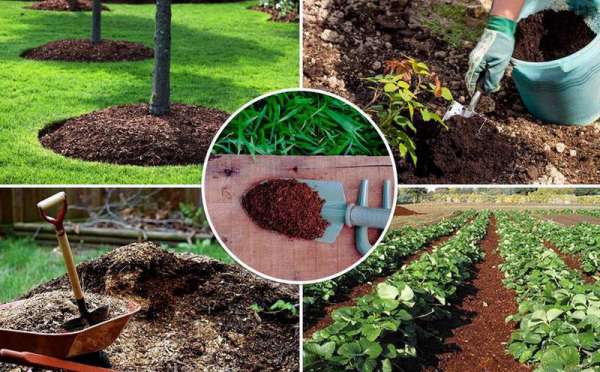

You may not have to wait for full ripening, and in the fall, spread the young compost as mulch on the beds and flower beds, having previously "extinguished" the acidity with wood ash, chalk or dolomite flour.
Compost made from fallen leaves of trees will be a useful way of disposing of permanent waste. Despite the fact that it does not have a high nutritional value, it still serves as an excellent tool for improving the structure of the soil. To speed up your composting process, follow these guidelines:
- Find an easy way to shred foliage
- keep a constant moisture content of the masses;
- add nitrogen to the masses in the spring by adding freshly cut grass or a solution of nitrogen-containing fertilizers to them;
- use composting accelerators;
- stir the maturing compost regularly.
Finished leaf compost is used as a mulching material, and is also applied to the beds before digging.You will certainly appreciate how much the water-holding properties of the soil in your garden will increase, and the crops will certainly thank you for your efforts with a plentiful and high-quality harvest.
Fertilization of vegetable gardens and summer cottages is an important stage in spring soil cultivation. However, the necessary set of nutrients is not always at hand; in this case, compost from tree leaves will come to the rescue. Easy to manufacture, it will be the optimal yield.
We use fallen leaves as fertilizer
With each fall of leaves, the problem of what to do with crumbling foliage becomes acute.
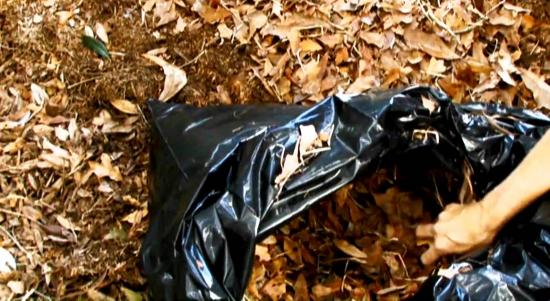

Some just throw away litter, or burn it, which is absolutely wrong.
The mass thrown off by foliage trees contains a large amount of fiber and such microelements important for the growth and development of cultivated plants as iron, potassium, phosphorus, nitrogen, magnesium, calcium and sulfur.
Correctly treated foliage can be useful not only for improving the structure of the soil, but also for increasing the level of soil fertility. Fallen foliage helps to loosen the earth, enriches it with such useful elements as moisture and oxygen. In addition to this, earthworms often live in decayed foliage, which also contributes to loosening the substrate.
The leaves of almost any tree that grow in every region can be turned into fertilizer. Humus from walnut leaves works especially well on soils, but they can be found only in some areas.
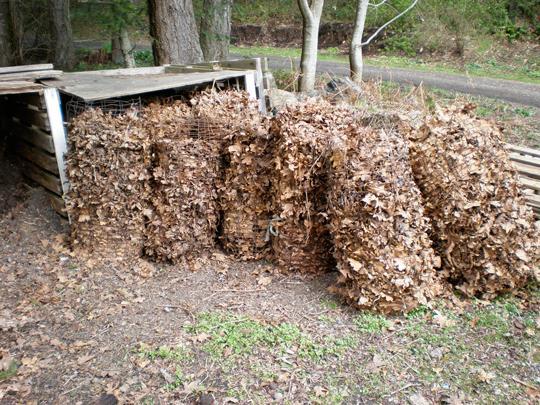

On the contrary, you should not abuse the leaves of fruit crops, as there is a danger that they are carriers of harmful insects and diseases.
You should not throw away litter, it is a unique source of a large amount of nutrients that will help to significantly improve the quality of the soil in the garden and in the garden.
Benefits of compost
Compost top dressing is the decayed remains of leaves, grass, plant food waste (peel, fruits, cleaning). Ash, chalk, sawdust, straw, bird droppings, eggshells and other organic components are added to the mixture.
Synthetic fibers, stones and other solid elements, debris and manure from non-herbivorous animals are not suitable for composting.
The advantage of feeding is that this method of disposal relieves summer residents from the need to remove vegetable waste from the garden. Preparing compost in garbage bags does not require special costs, and there are many benefits from an environmentally friendly mixture for future plants:
- The product contains a number of trace elements necessary for growth and development. The composition of the compost, depending on the raw material, may include: nitrogen, phosphorus, calcium, potassium, magnesium, chlorine, iron, etc.
- The soil fertilized in this way becomes loose and allows air to pass through better, which means that it leads to the saturation of plants with oxygen.
- In such a soil, moisture lingers longer.
- The beneficial microorganisms that the compost is saturated with contribute to the decomposition of organic matter and have a beneficial effect on the microflora of the earth. In it, earthworms are more readily bred - the natural helpers of the gardener.
- Savings on the purchase of off-the-shelf chemicals that sometimes harm plants.
Composting leaves in a compost pit
The leaves are used for both soil mulching and composting. The latter is known to many gardeners as a consequence of the high level of efficiency, which has a positive effect on the quality of the crop.
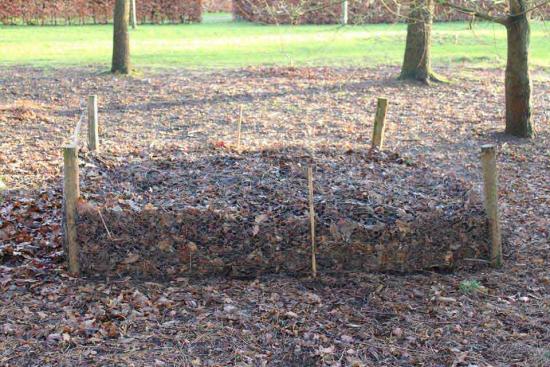

To compost in a specially dug hole, it is recommended:
With the arrival of spring, it is recommended to plant vegetables in the pit, but by autumn, after the harvest has been collected, it is recommended to scatter compost throughout the entire plot.
It is important to remember that for the preparation of fertilizer, only the fall of forest trees, or those that grew away from roads, is suitable. The fact is that the plants that grew near the highway absorbed a large amount of harmful substances, which can negatively affect the harvest.
And another way to make compost:
How to compost tree leaves in 7 days
To prepare fertilizers quickly, it is worth a little diversification of the composting mixture, not only leaves, but also hay, straw and even paper are useful. It is recommended to grind all this thoroughly. This will ensure uniformity of oxygen and moisture distribution processes, which ensures more productive work of compost microbes.


You can grind the constituent components by passing them several times through rotary lawn mowers.
If manure or green plants are at hand, they can also be used for fertilization, after crushing them.
After that it is recommended:
- Fold the resulting crushed mixture into a pre-dug hole, if it turns out to be dry, moisten and mix thoroughly. If necessary, you can additionally moisten the mixture, do not let it dry out;
- Cover the pit with plastic to keep warm;
- Observe the change in temperature, it should begin to grow on the first day;
- Stir the contents of the pit systematically to supply the oxygen necessary for the compost microbacteria.


By the end of the week, the compost will be ready, but to be sure, it is recommended to hold it a little longer, ideally for another week. You can determine when the fertilizer is suitable for use by its temperature, it should not exceed + 38 C, otherwise it can harm the plants.
Is it possible to compost oak and walnut leaves
There is an opinion that it is impossible to use walnut and oak leaves for compost, as they emit harmful substances that can spoil the fertilizer.
In fact, the foliage of these trees contains a large amount of tannins, which greatly slow down the decay processes. In addition, the aromatic components of these plants can repel some insects.
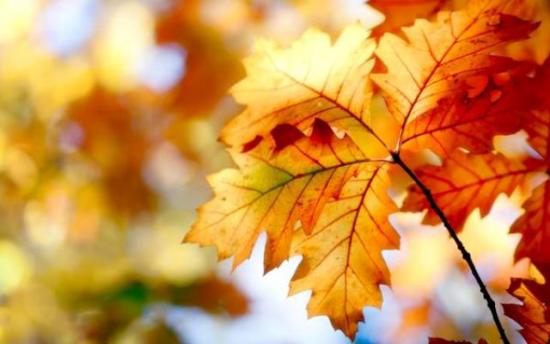

Since oak and walnut foliage decays slowly, the heat will not be generated enough and the decay processes will proceed more slowly.
However, this does not mean that adding them to compost can negatively affect the quality of the crop. Plants do not feed on the humus itself, but on the waste products of the microorganisms that live in it.
If you add oak and walnut leaves as an additional component to the compost pit, you can not only not harm, but also improve the quality of fertilizer. The aromatic substances they contain will protect the feeding from harmful insects, and a large amount of nutrients will enrich the soil.


It is fundamentally wrong to say that the use of oak and walnut litter in composting is wrong. Despite the large amount of tannins that slow down decay, they also contain a considerable amount of nutrients that plants need in the process of growth.
Composition of leaf litter compost
Dry foliage is a carbon-containing component that takes a very long time to turn into humus unless nitrogen is added to it in the form of greens or urea. The main thing is to observe the correct proportions of the components: for each nitrogen part it is necessary to add 3 carbon.
If only litter is used for composting, then leaf humus will ripen about 2 years. When using various biodestructors - year. This is not profitable, since fertilization must be applied annually, or a good harvest can hardly be expected.
To speed up the process, you need to collect leaves from the site - any.If oak or conifers grow, then their total number should not exceed 15% of the total mass. The fact is that these substances increase the acidity of the fertilizer. If there are a lot of them, then leaf humus will be unsuitable for many plants that prefer a neutral or slightly acidic environment.
Video: What to do with fallen leaves
There is a recipe that only allows you to use oak leaves for composting, but it contains chicken droppings, the pH of which is above 7 units. These two components balance each other, so the acidity in leaf humus remains within acceptable limits.
Preparing compost in garbage bags
Making compost in plastic bags is not only quick, but also low-cost. The only thing that will have to be spent is garbage bags. It is important that the bags are large and the black polyethylene must be tight.
You can find the most suitable ones in hardware stores, while it is recommended to check the strength of the material on the spot, since the packaging does not always indicate the density level to check it is enough to stretch them, if they practically do not stretch - this is what you need.
Many gardeners recommend paying special attention to bags holding 250 liters. Fertilizer will not dry out in them, which is especially important when making compost.
After the bag is purchased you need:
- Collect any plants, leaves, fruits and herbs. At the same time, it is important to ensure that none of them is infected with parasites or disease, since the problem can affect the entire mass of fertilizer, and then the soil into which it will be applied;
- Add food waste to the mixture (potato peels, egg shells)
- Apply soil, or weeds with soil, add cardboard, paper, sawdust. It is important that the sawdust is from untreated wood, sleepers will not work;
- Add legumes to increase nitrogen levels in the compost;
- Place the bags on the site and lay everything collected in layers: food waste, soil, leaves, and so on, then thoroughly tamp everything and thoroughly pour water over everything;
- Add EM preparations to the workpiece, which promote the active reproduction of microorganisms that contribute to decay;
- Tie the bags tightly so that no air enters them;
- It is important to remember that in the process of manufacturing organic fertilizers, it is not recommended to add to it everything that may be associated with chemistry: soapy water, ash, chemicals.
Experienced gardeners use complex compounds of mineral and organic fertilizers. It is better to lay them in the fall, since in the spring, after long-term exposure to subzero winter temperatures, bacteria develop faster.
Making compost in bags is simple and inexpensive. To do this, it is recommended to purchase dense black garbage bags, collect organic raw materials and an EM preparation, sprinkling all this with a small amount of water.


Making compost from tree leaves with your own hands is an easy task. It is enough to prepare the hole in advance, fill it with litter and water it with water in order to get high-quality fertilizer for the soil of the garden and vegetable garden next spring.
Let's see how to properly prepare compost from leaves in garbage bags:


Fallen leaves after decay turns into humus (humus) - good natural fertilizer.
Therefore, instead of burning the leaves or taking them out of the site, you can start making fertilizers for your own garden.
Moreover, material is free, in addition, the issue of harvesting leaves from the site is being resolved.
However, the use of fallen leaves as fertilizer requires knowledge of some of the nuances, which are described below.
Production tools
Manufacturers have set up many composting devices.However, their use is beneficial only on large farms. In such organizations, composts are produced in large volumes, and the use of small equipment is not rational.
To prepare humus in individual summer cottages, and also in cramped conditions, it is enough to use those devices that have already been recalled in this article.


Garden vacuum cleaner - a handy tool for collecting foliage
Such devices include:
- fan and lawn rakes - they are intended for collection;
- garden vacuum cleaners and lawn mowers - used for collection and shredding;
- mulchers - intended for shredding.
Most gardeners know that the soil depletes over time, which means that you should not expect a good harvest on such lands. Therefore, soil fertility should be increased annually. It will take several years to improve the soil.
Thus, compost in bags will save every gardener money and will maintain soil fertility every year.
Difference from mulching
Foliar fertilizer not only fills the soil with nutrients, but also improves its structure. Foliage mulching has a similar effect. But bifidobacteria and various mushrooms that ensure the transformation of green mass into humus, actively consume nitrogen, pulling it first from the air, then from the ground.
Therefore, in mulched areas, the nitrogen content decreases, which is why yield decreases, because the plants lack a basic building block.
In the process of decomposition, microorganisms secrete various acids that change the acid-base balance of the soil... Therefore, mulching and composting have different goals.
When mulching the main thing is to protect the soil from:
- drying under the influence of wind and sunlight;
- frost, which can damage the roots of plants;
- weeds, because it is difficult for them to break through the thick mulching layer.
The main goals when making humus are:
- improving soil structure and increasing air and water permeability;
- replenishment of nutrients and microelements consumed by plants during the growth process;
- increasing soil fertility;
- adjusting the acid-base balance of the soil to better match the planted or ready-to-plant plants.
We equip the compost box
If you do not spare money for your favorite summer cottage, you can go the easiest way and buy ready-made compost boxes. Such adaptations save you unnecessary hassle and will help you get valuable leaf compost for many years.
Ready-made compost boxes on the site
In our market there is a very large selection of various devices for this purpose in different price categories. You can choose the appropriate option for your site by looking at the selection of Composters for summer cottages.
Less prosperous summer residents adapt old barrels, tanks, cast-iron baths and even dense garbage bags with a volume of 200 liters or more for this purpose. The main rule when using such improvised means is the holes in their walls, which will provide air flow to the ripening humus mass. The contents of these containers will also need to be shoveled several times per season: transferred from one to another or poured onto the ground covered with film, and then returned again.
Foliage fertilizer - is it worth doing?
For any growth plants need simple carbon and nitrogen compounds, from which, as a result of a complex metabolic process, cells are obtained that form various layers and parts of plants.
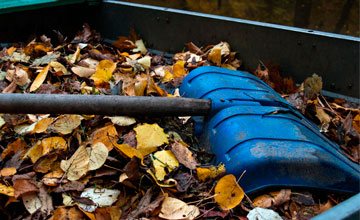

This is true both for trees and for most plants suitable for planting in:
According to this ability, humus from fallen leaves inferior to humus from wood waste, because in the latter there are much more carbon-containing compounds (cellulose, lignin).
In addition, humus from sawdust or shavings more effectively changes the structure of the soilloosening it and increasing its ability to absorb water and let air through.
Therefore, it is worth preparing compost from fallen leaves only in those cases when:
- no free or very cheap wood waste;
- there are too many fallen leaves, and it is impossible to get rid of them in other ways for any reason.
Output
Fallen foliage is a good material for composting, but making high-quality humus from foliage alone is very difficult. Therefore, other materials are used along with it.
After reading the article, you learned:
- how to make compost from fallen leaves;
- what substances and why are added to such compost;
- how to use ready-made foliar fertilizer.
With the onset of autumn, most owners of private houses or summer cottages begin to collect and burn foliage. Passers-by at this moment, walking down the street, are outraged that there is nothing to breathe and there is impenetrable smoke, and clothes need to be aired for a day.
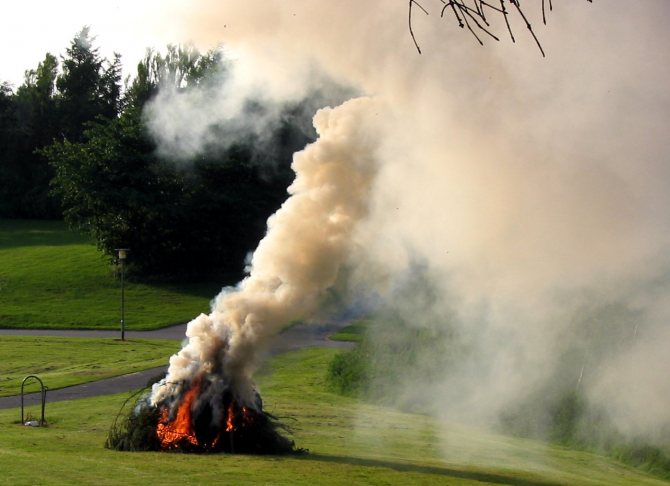

There are several ways to dispose of fallen leaves. One of them is useful as a fertilizer and can be made in a maximum of 2 weeks, while the weather is still warm. You just need to hurry up: prepare a compost bin and a bottle of EO preparations.
What leaves are suitable for producing humus?
Fallen leaves of any species growing in the region are suitable for composting, the main requirement is the absence of foci of diseases and larvae of pests... To do this, the trees are inspected every month, checking the foliage and branches for any signs of disease or pests.
If such signs are found, then the diseases are tried to be treated, and the pests are poisoned with fungicides.
In case of treatment failure or processing, and also if there is a likelihood of damage to other branches or trees, then they establish the boundaries of the damaged area, after which the branch is cut off above the intended one. Then cut piece taken out of the garden or vegetable garden and dispose of.
Carefully need to fit exotic foliage, which are not characteristic of this region and are not related to the trees growing on it.


For example, don't use palm, eucalyptus or coconut foliage to make compost that will be used to fertilize European trees.
After all these plants have different metabolism, and they consume different substances, so compost will be ideal for the same trees, but in relation to other species it will be less effective than humus from local plants.
In particularly unfortunate cases can harm, slowing down growth or disrupting metabolism, which can lead to disease or death of the plant.
How to make fertilizer?
Exists several cooking methods compost from fallen leaves that differ in:
- time of the process (natural, accelerated, fast);
- the method of forming the heap (heap, pit, box, bag);
- chemical composition (saturation with certain substances, the acidity value corresponding to the requirements of plants).
Process rate
In the wild, the process of complete decay the results of leaf fall, as a result of which humus is formed first, then a mixture of humus with earth, that is, humus (this is how humus is often called, in which there is at least a small part of the soil), takes 1-3 years and depends on many conditions.
In the first winter, the foliage becomes limp and soften, due to which part of it becomes food for earthworms and other insects. The other part becomes food for bifidobacteria and fungi, the secretions of which form the basis of humus.
This base is mixed with particles of the substance undigested by microorganisms, as well as pieces of foliage, in which various processes of decomposition of complex organic matter into simple components take place.
Here the main factors that affect the speed of the processes:
- the size and shape of the source material - the larger, the more time it will take for all participants in these complex processes to fully recycle the compost;
- the initial amount of bifidobacteria and fungi - their spores are constantly in the air, but the number of spores is insignificant and for the start of active actions they must multiply;
- the amount of nitrogen - most of the microorganisms participating in the decay processes need nitrogen, therefore, its lack leads to a drop in activity, which means an increase in the decay time.
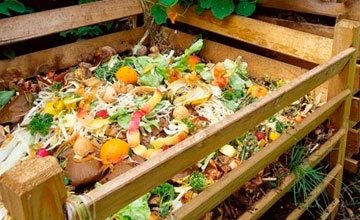

Natural decay in a vegetable garden will take longer than in a natural environment.
There, dead insects and small, rapidly decaying plants, or the excrement of birds and animals are constantly added to the decaying mass.
In addition, various small forest and field inhabitants regularly ted up the rotting layer, due to which the main participants in the process receive more atmospheric nitrogen and oxygen.
All this allows us to conclude - for getting compost in the shortest possible time it is necessary:
- Grind as much as possible deciduous mass. This will allow microorganisms, participants in decay processes, to carry out their part of the overall work easier and faster.
- Introduce excrement into it birds or animals (preferably herbivores). You will also need to add various plant remains, including kitchen waste.
- Submit preparations containing strains microorganisms.
- Periodically (about once a month) stir up a bunchimproving the flow of oxygen and nitrogen.
Heap formation method
The easiest way is to dump the fallen leaves in a heap, but this method is not very effective, because it will take a large piece of a garden or vegetable plot, and after rotting, the soil on it will be infertile.
In the process of decomposition, microorganisms will actively draw nitrogen not only from the air, but also from the soil, which will lead to a drop in yield and other problems.
In addition, the wind will pull the foliage around the garden or garden, spoiling their appearance. therefore more efficiently obtaining humus in:
Pit advantage in the fact that from its walls into the decaying mass will fall lumps of earthwho only improve performance received humus... In addition, it is only intended to produce humus, so the loss of nitrogen by the soil will not affect the plants in any way, because there will be no landings in the pit.
A thin layer of soil, with which the contents of the pit are poured from above, eliminates the problem of flying leaves. Only minus pits is that how her digging, So and unloading ready-made humus - enough hard physical labor.


The box is made of boards, and some gardeners upholstery it from the inside with protective materials (plastic or cellophane film), while others prefer to change boxes after 3-5 years, when the influence of microorganisms and their waste products will deprive the boards of most of their strength.
Drawer advantages is that:
- it protects the contents from the wind, so the leaves do not scatter;
- unloading the finished compost from it is easier than from the pit, because the bottom level is noticeably higher;
- for its manufacture does not require heavy earthwork, so it can be installed even where there is rock under a thin layer of soil.
Bags are used only if, for any reason, it is impossible to obtain humus in other ways.
Real bag advantage only that they are easy to transfer from place to place, however, it is almost impossible to stir the contents in them, which increases the decay time.
They, like a pit or a box, protect the fallen leaves from the wind, so that it does not scatter around the garden or vegetable garden. In addition, only very strong bags should be used, and they are not cheap.
Chemical composition
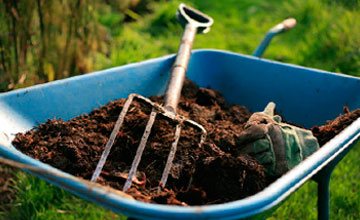

Humus fallen leaves contains nutrientsnecessary for cell division, but cannot provide plants with the remaining necessary components.
Moreover, he has a very high acidity, therefore, without lowering it, it can disrupt the acid-base balance of the soil, which will lead to a drop in yield and slowing down the growth of plants.
Adding excrement birds and pets not only saturates humus with components necessary for plants, but also increases the activity and rate of reproduction of most microorganisms involved in the processing of fallen leaves.
The disadvantage of adding excrement is an even greater increase in acidity, so together with manure or droppings into future humus contribute:
These substances reduce the acidity of the finished product, and are also sources of calcium and other minerals necessary for the fruiting of plants.
Besides these components any plant waste can be added, because they all add something to the chemical composition and make it more balanced, as it happens in the natural environment.
How to speed up the maturation of compost
Although gardeners in Russia have long been using foliar fertilization, their foreign counterparts have gone a little further. They don't just put foliage in pits on the site, but fill the leaves into rotating barrels. If you regularly mix the layers, and usually summer residents just forget about this, the decay process accelerates.
Under normal circumstances, gardeners simply put the leaves and roots in the compost heap, where they rot until the next season. And it will take 1-2 years to get the fertilizer.
Compost heap. Illustration for this article is used under a standard license.
Foreign summer residents do differently. They set up several barrels with a capacity of 10 to 100 liters on the site, placing them on wooden beds. Occasionally, while gardening, they walk up and rotate the containers. The contents are mixed, because of this, it rots much faster. Therefore, the fertilizer ripens in 1 week, although under normal conditions it would take 1-2 years.
The good thing about foliage and grass compost is that it does not contain a single insect with this method of preparation. We can say that the substance is dead. In the process of decay, the temperature rises, so all other soil inhabitants die. And such compost is well suited for growing seedlings of both vegetable crops and indoor plants.
It is not necessary to rotate the barrels manually, you can equip the structure with a mechanical drive. If there are no such skills, containers are equipped with handles.
For convenience, the barrels are installed on a wooden bed. It is made from a board of "fifty", then it will be strong. To make the design lightweight, use containers made of plastic, not metal.
Unlike a compost pit, organic tools do not take up much space. They can be located near sheds, garages, and you do not have to allocate land on the site.
When the fertilizer is ready, it is poured from barrels into bags. They are tied up, put in a shed or garage. In this form, it can be stored as long as necessary, adding, if necessary, to the wells.
Fallen leaves after decay turns into humus (humus) - good natural fertilizer.
Therefore, instead of burning the leaves or taking them out of the site, you can start making fertilizers for your own garden.
Moreover, material is free, in addition, the issue of harvesting leaves from the site is being resolved.
However, the use of fallen leaves as fertilizer requires knowledge of some of the nuances, which are described below.
How to make a compost pit?
Despite the name, the compost pit is not only the pit itself, but also its contents. therefore talking about its creation, they mean:
- land work, that is, digging a hole or foundation pit;
- loading compost;
- follow-up service.
Earthworks


Before digging a hole, you must choose a place for it and determine the dimensions.
Usually it is done in the corner of a garden or vegetable garden, where there are no plantings and the place is very far from the house.
The depth and dimensions of the pit are determined based on the volume of the deciduous mass, taking into account crushing or compaction.
It should be borne in mind that the crushing ratio when using a mulcher or garden vacuum cleaner with mulching function is 1:10, and when compaction with feet, this ratio is not more than 1: 3. You can find more information about the devices that chop grass and fallen leaves here.
Having decided on the size, start land works... It is possible to reduce the amount of work a little if the excavated ground is used to create the boards.
This will help to create the desired volume at a shallower depth, however the width of the sides at the top must exceed 40 cm, otherwise there is a high probability that they can be washed away by rains or blown away by the wind.
In addition, it is necessary leave enough soil to make the lid - that is, cover the compost with a layer of soil 5–15 cm thick, but you can do without it.
At the same time, it is undesirable to make the total depth and width of the pit too large, optimal size 1m... If you make it wider or deeper, then it will be more difficult to stir the contents.
Loading components
We recommend before downloading mix all components compost, this will make its composition more uniform, so the decay processes in all layers will proceed at approximately the same speed. If there is no desire or ability to mix all the components, then can form a cake, that is, lay in layers 1–2 cm thick.
Here optimal composition in percentage:
- chopped fallen leaves - 50;
- fresh droppings or manure - 20;
- kitchen waste - 15;
- chopped grass - 10;
- ash - 3;
- lime or chalk - 2.
These proportions can be varied within wide limits, but it is desirable that the ratio of foliage and nitrogen-containing components, that is, droppings or manure, does not exceed 3: 1.
Highly it is important to use droppings or manure that have been exposed to the air for at least a month, because fresh animal excrement contains pathogens of plant diseases, as well as various seeds.
During this time, most of the pathogens will die in them, and the acidic environment will dissolve the seed shells and sharply reduce their germination.
Having loaded a layer of cake 10 cm thick, it is advisable to pour it with one of the preparationscontaining the necessary microorganisms and a nutrient medium for them. Any means to speed up the maturation of the compost will also work.
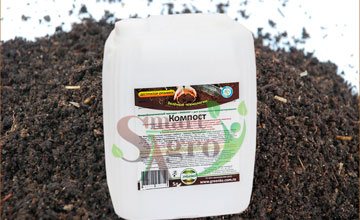

It is advisable to carry out such treatment with preparations after laying each layer of such a thickness.
You can do without drugs, but then the decay time will be noticeably longer.
When all layers are loaded, the contents of the pit are covered with earth... Some people mix soil with animal excrement in a 1: 1 ratio.
The thickness of such a cover 5-15 cm... Instead of it, you can also use a wooden shield of a suitable size, the lower part of which should be covered with polyethylene, this will extend its service life.
Service
The pit does not require special maintenance, it is enough Stir the contents once a week... In this case, there is no need to completely turn the contents over, it is enough to put a long, strong stick into the compost and wiggle it inside. For each square meter, 3-5 such teddings are enough.
While the compost is ripe, an unpleasant odor will appear after each tedding. When microorganisms completely process organic matter, a smell characteristic of a living forest will appear.
After the appearance of the forest smell it is necessary to excavate part of the soil covering the pit and shovel the contents.
If the compost has turned into a mass like loose earth without an unpleasant smell and traces of moisture, and no earthworms are visible in it, then the process is completely over. If any sign is absent, then the heap must be turned again and left to ripen.
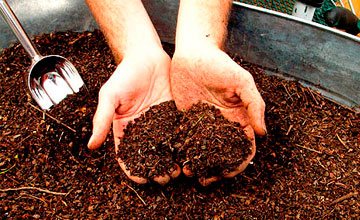

As part of the fastest humuswhich ripens in 1-2 months are included:
- chopped fallen leaves;
- dried excrement of domestic animals or birds;
- shredded grass or wood;
- means for accelerating the maturation of compost;
- acidity reducing agents, i.e. lime, ash or chalk.
Once fully matured, the compost is ready for use.
Fertilizer preparation
Before preparing leaf humus, it is necessary to prepare raw materials:
- to clear the area of weeds and demolish it closer and closer to the pile, where the components will be laid;
- inspect the tops of vegetable plants for fungal diseases, if the greens are clean, then you can use it;
- if the lawn has recently been mowed, then the grass is left in the sun for 2 - 3 days to dry out. If lawn grass is the only nitrogen component, then it is laid without drying.
All components are crushed: the less the better. For example, Western farmers use special devices - compost grinders. With us, this role is most often performed by a shovel or pruner.
A variety of foliage composting heaps
It is advisable to make a collar for leaf humus with small holes, since a small substrate will simply spill out of the box. It is better to use a plastic barrel for this, which must be fixed to the pipe and rotated periodically to mix the components.


If the question of cooking speed is not acute, then an ordinary barrel will do, but you will need to shovel the contents manually - with a pitchfork.
How to compost faster
Most summer residents are interested in how to make leafy humus quickly, until autumn is over. Answer: it won't work without accelerators. Baikal EM-1 or Radiance are used as biological additives. You can probably find other biodegradants with similar effects in your local stores.


The solution is made according to the instructions and is applied to each laid layer of ingredients:
- A layer of soil is laid on the bottom of the barrel about 20 cm. Watered with a solution of microorganisms.
- The next layer is leaves. 20 - 30 cm and also spill with a biological product.
- Further, the nitrogen component is grass, weeds or green manure a layer of 10 cm.
- Priming 5 - 10 cm.
- Leaves again.
- The last layer, which covers all the components, should be a primer.
After everything is stacked, the compost is left for 3 days. During this time, the processes of decomposition of organic matter by bacteria begin in the barrel. After 3 days, it is necessary to turn over all the components so that the microorganisms receive oxygen and continue to multiply and eat plant debris.
Application of humus
Here are the main how to use it:
- preparation of soil mixtures;
- fertilization of soil in gardens or vegetable gardens;
- mulching.
Soil mixtures based on humus used for germinating seeds and growing seedlings, because their structure is more suitable for these purposes than most soils.
The soil mixture is easily air and water permeable, contains many nutrients and trace elements necessary for the rapid development of plants, and is also filled with nitrogen.
The composition of the soil mixture and the proportions of the main components are determined individually, taking into account:
- soil properties;
- humus composition;
- plant breed.
Fertilizer in orchards or vegetable gardens is the main purpose of humus. For this it scattered throughout the fertilized area and after 3-5 days dig up shovel or walk-behind tractor. Such treatment improves the structure of the soil and fills the soil with the substances necessary for the rapid growth of plants.
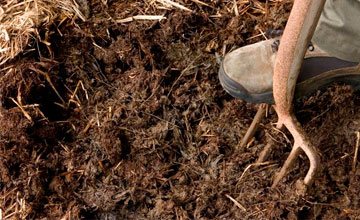

Fertilizer applied in spring or autumn... Spring introduction of humus is done 1–2 months before planting of seedlings or seeds, so that the structure of the soil has time to recover.
An autumn deposit is made shortly before the onset of frost and after the removal of all annual plants.
Humus mulching can be carried out at any time of the year, because this material does not harm plants.
This mulch is less effective at protecting against frost, sun and weeds, but gently improves soil structure, thanks to which it is possible to do without loosening. However, on hot days or before winter, you should not neglect mulch made from cut grass or shredded wood waste.

